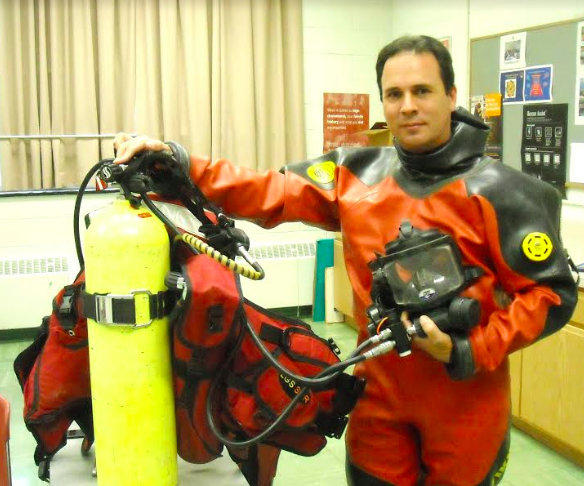
BY BARRY WARNER
Nearly 75 percent of the earth is covered by water. And unlike fish, humans don’t live in water and can only survive in it for a short time. The specially equipped and trained members of the Piermont Fire Department Volunteer Dive Team, Empire Hose Co. #1, is called upon in time of need to perform the grueling tasks of rescue, search and recovery in the Hudson River.
The term ‘public safety diving’ (PSD) is used to describe underwater work conducted by fire rescue. Unlike a recreational diver who can plan the date, time and location of the dive, PSDs respond to emergencies 24 hours a day, seven days a week, including holidays and weekends. It is not uncommon for PSDs to dive in the middle of the night, during inclement weather, in zero visibility or in waters contaminated by chemicals and biohazards.
“Diving in black water requires special equipment,” Lieutenant Scott Silva told the Rockland County Times. “Some of the items you will need include a fully-encapsulated hazmat dry suit, full-face mask with communications, a tether, gloves, side cutters, a tool for cutting wire and a knife. The full-face mask with communications is necessary to call for help if you are entangled. If you are diving in contaminated water, the full-face mask will help to protect your eyes, nose and mouth from contaminants. Gloves are especially important in black water, not only to protect you from the cold or pollutants, but to also protect the hands from possible cuts due to debris that may be located on the bottom, broken glass, barbed wire or razor-sharp metal pieces with cables and wires that can cause entanglement. Large, wide fins are worn to overcome water resistance caused by the diving equipment, but are short enough to allow for acceptable maneuvering.”
“In public safety diving, where we are mostly searching for something on the bottom, since divers cannot see where they are, they have no orientation to where shore is, where they have been or where they are going next.,” Scott continued. “Diving is tethered-directed. The tender, or person on the boat, works as one with the diver as has a great responsibility. The diver’s job is to do as their tender tells them, as the tender can see where the diver is and where the diver is going by the relationship of the angle of the tether line connected to the harness and the line movement.”
The drysuit provides the wearer with environmental protection from very cold water and contaminants. The body temperature is regulated by the use of an insulating layer of air between the body and waterproof outer layer. In addition, the drysuits feature seals and heavier materials to keep the wearer dry.
Public Safety Divers often carry cylinders that feed compressed breathing gas to full-face masks, which provide a clear breathing space and protection from the outside environment. In scuba diving, the diver uses a self-contained breathing apparatus, which is independent of surface air supply to breathe underwater.
A buoyancy compensator or buoyancy control device (BCD) is a piece of diving equipment with an inflatable bladder, which is worn by divers to establish neutral buoyancy underwater and positive buoyancy on the surface.
“I have been a diver for 29 years and there is no greater satisfaction than being part of a team and making a difference in the community,” Lt. Scott Silva said. “There are a handful of people who can do what we do thanks to our intensive training. There is pressure to get the job done and transfer the injured to the EMTs or to provide closure to the waiting families. My aim is to know everything about diving and push on to a leadership position.”
For additional information about the Piermont Fire Department Volunteer Dive Team, call 845-359-1208 or visit www.piermont-ny.gov/firedepartment.

You must be logged in to post a comment Login